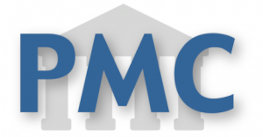Documentdetail
ID kaart
oai:pubmedcentral.nih.gov:1062...
Onderwerp
Research ArticlesAuteur
Liu, Mohan Xie, Daoyuan Hu, Die Zhang, Rui Wang, Yusi Tang, Lin Zhou, Bailing Zhao, Binyan Yang, LiLangue
enEditor
John Wiley and Sons Inc.
Categorie
Advanced Science
Jaar
2023
vermelding datum
27-11-2023
Trefwoorden
immunotherapy tumors immune situ cancerBeschrijving
In situ vaccination is a desirable strategy for cancer immunotherapy due to its convenience and capacity to target tumor antigens.
Here, an in situ nanovaccine based on a cationic peptide with cholesterol‐modified, DP7‐C, for cancer immunotherapy is rationally designed, and developed a cancer nanovaccine that is easy to preparate.
The nanovaccine includes cocktail small interfering RNAs (siRNAs) and immunologic adjuvant CpG ODNs, has synergistic effect in the cancer treatment.
This nanovaccine can induce tumor cell death, promote antigen presentation and relieve immune suppression in the tumor microenvironment (TME).
Moreover, this nanovaccine is administered to CT26 (hot) and B16F10 (cold) tumor model mice, in which it targeted the primary tumors and induced systemic antitumor immunity to inhibit metastasis.
It is validated that the nanovaccine can convert cold tumors into hot tumors.
Furthermore, the nanovaccine increased the immune response to anti‐PD‐1 therapy by modulating the TME in both CT26‐ and B16F10‐tumor‐bearing mice.
The siRNA cocktail/CpG ODN/self‐assembling peptide nanovaccine is a simple and universal tool that can effectively generate specific tumor cell antigens and can be combined with immuno‐oncology agents to enhance antitumor immune activity.
The versatile methodology provides an alternative approach for developing cancer nanovaccines.
Liu, Mohan,Xie, Daoyuan,Hu, Die,Zhang, Rui,Wang, Yusi,Tang, Lin,Zhou, Bailing,Zhao, Binyan,Yang, Li, 2023, In Situ Cocktail Nanovaccine for Cancer Immunotherapy, John Wiley and Sons Inc.

Choice Between Partial Trajectories: Disentangling Goals from Beliefs
agents models aligned based bootstrapped learning reward function model return choice choices partial
Adverse and serious adverse events incidence of pharmacological interventions for managing chronic and episodic migraine in adults: a systematic review
aes medications bta incidence migraine drugs disorders

